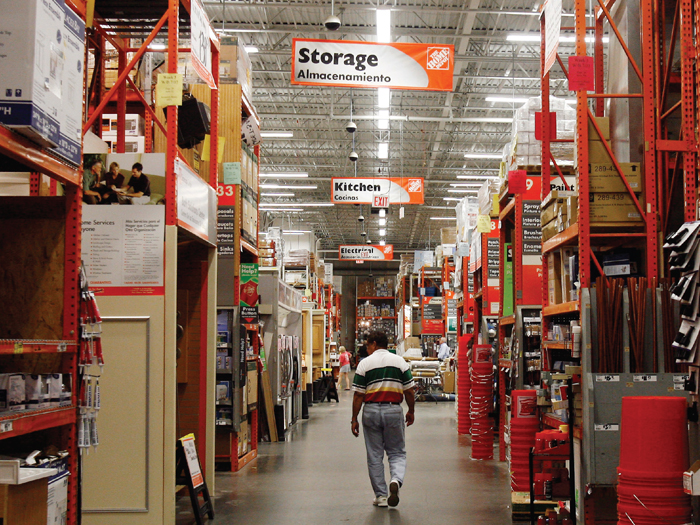Sponsored Content by AIG
P3: 3 Benefits + 3 Risks

The American Society of Civil Engineers issues a report every year tracking the status of the nation’s infrastructure across 15 categories, including airports, pipelines, roads, bridges and solid waste facilities. In 2013, the United States earned a D+, a mark that has been steadily declining since it received a C in the ASCE’s first report card released in 1988.
To combat its ailing infrastructure, federal and state governments will increasingly rely on partnerships with private investors to help get these big-ticket projects off the ground.
The U.S. Department of Transportation defines public-private partnerships, or P3s, as “contractual agreements formed between a public agency and a private sector entity that allow for greater private sector participation in the delivery and financing of transportation projects.”
In its whitepaper “The United States: The World’s Largest Emerging P3 Market,” global insurer AIG outlines the promise offered by these partnerships in fixing the nation’s crumbling infrastructure, but notes that they come with their own set of challenges. Below are three major benefits and three key risks to the P3 model.
As we enter into new political landscape in the U.S. with President-elect Donald Trump, the role of P3 may become increasingly important.
The Benefits
1. Filling Investment Gaps
In a time when public dollars are limited but infrastructure needs are infinite, P3s help to fill in the investment gap to make desperately needed upgrades to American infrastructure.
According to the ASCE, an estimated $1.723 trillion is needed for surface transportation, $100 billion for rail and $134 billion for aviation infrastructure. The expense is far outpacing the level of investment from the public sector.
According to a McGraw Hill Construction Dodge report, public works construction dropped 14 percent from 2011 to 2012, and was projected to drop another 6 percent from 2012 to 2013. If the shortfall in public investment isn’t made up in some way, continually aging infrastructure may lead to disasters that cost lives and compromise economic activity in the towns they service — and state governments will be liable for the damages.
Especially in challenging economic climates, P3s can ease the burden on government budgets and help critical projects come to life.
2. Increasing Efficiency
On top of filling a pressing public need, P3 projects also save time and money. Compared to public projects, they have a better track record when it comes to staying on budget and finishing on time.
According to a study conducted by Infrastructure Partnerships Australia from 2000-2007, 18 percent of traditionally procured projects ran past deadline, while only 10 percent of P3 projects were past due. When traditional projects ran late, they were delivered 26 percent later than originally expected. Overdue P3 projects, on the other hand, were completed only 13 percent later.
Forty-five percent of traditionally procured projects incurred additional expenses, compared to just 14 percent of P3 projects. When traditional projects ran over budget, they incurred 35 percent extra expenses, while over-budget P3s went over by only 12 percent.
3. Spurring Economic Growth
P3s also help to spur economic development. They offer a lucrative business opportunity for investors in a time when returns are typically low. And infrastructure projects – particularly transportation networks – enable economic growth in the communities they connect.
Take for example E-470, the 47-mile highway constructed outside Denver, Colo., to service traffic to and from the soon-to-be-opened Denver International Airport. Eight counties and cities pooled their funds in 1989 to build the road, with no federal funding whatsoever. The highway was completed four years ahead of the airport and was the first large tollway to use electronic tolling.
The road paved the way for economic development in a previously sparsely-populated area. The population along E-470’s corridor was expected to double in the years following the project’s completion. In fact, the population of Denver — and the whole state of Colorado —has risen so much that the toll road is undergoing expansion.
The ASCE’s 2013 Report Card stated, “We know that investing in infrastructure is essential to support healthy, vibrant communities. Infrastructure is also critical for long-term economic growth, increasing GDP, employment, household income and exports. The reverse is also true – without prioritizing our nation’s infrastructure needs, deteriorating conditions can become a drag on the economy.”
The Risks
1. Uneven Liability
The chief complaint of private entities that want to further P3s as viable delivery mechanisms is that the government allots an unrealistic portion of the risk to private partners. To make matters worse, most of that risk is not transferrable though traditional insurance methods.
Nailing down contractual language that is acceptable to both parties and spreads liability fairly is the primary obstacle in P3 deals.
According to AIG’s whitepaper, Administrator Victor Mendez, head of the Federal Highway Administration, has argued for more precise valuation of risk in P3 projects, so that public and private parties can place a dollar value on the amount of risk they are willing to assume and strike a fairer balance.
Insurers, for their part, will have to continually analyze the changing construction landscape and develop new products to meet the needs of the evolving P3 model. AIG, for example, recently developed a product to address contractual liability issues in P3 deals.
2. Long-Term Commitment
P3s require a long term commitment on the part of the private entity — as much as 20 to 30 years. Private investors have to be prepared not just for the construction, but also the ongoing management of the project, whether that means ensuring regular maintenance or operating tolling systems. On top of that, covering and projecting insurance costs for the operational and maintenance risk over that course of time provides another layer of complexity. Properly transitioning insurance coverage between course of construction and operational and maintenance can be challenging for some carriers.
Because it’s difficult to predict how the economic environment will change over the next several decades, private partners take on a big risk in assuming management responsibilities for that length of time. Proper due diligence, conducted by both parties, is necessary to ensure the private investor can go the distance.
3. Project Ownership
The general public has also shown concern that major pieces of infrastructure will be owned by a private company rather than the public, and therefore subject to that company’s financial viability over the long term, or to the needs of their bottom line. In other words, citizens don’t want their vital transportation networks and other facilities to be commoditized.
In reality, private investors merely help to finance and manage the project, while it remains the property of the public. Unless that message is communicated clearly, though, aversion to private sector involvement in public works projects could stall some P3 efforts.
In spite of the headwinds and slowly emerging P3 sector in the U.S., AIG stands ready to partner with stakeholder to manage the inherent risks, deliver solutions and value to our clients.
This article was produced by the R&I Brand Studio, a unit of the advertising department of Risk & Insurance, in collaboration with AIG. The editorial staff of Risk & Insurance had no role in its preparation.










